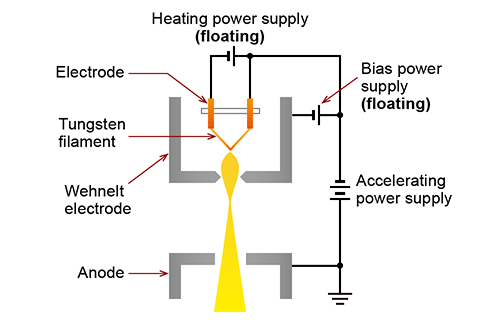Floating means that the potential or circuit is floating (away from) the ground potential. Originally, the word "float" indicated that an object floats on water or air. Therefore, it is called "floating ground" in reference to the floating potential and circuits.
A floating power supply can be used with the output floating off of the ground. In general, when using a DC power supply, one of the output ends must be grounded.
Using a floating power supply, the input and output sides have a high Galvanic isolation voltage, so another power supply output can be connected to the other output end without using the ground. Such a method is called a non-grounding link method (floating power supply), and isolation transformers are used for high withstand voltage.

Information on related articles in Technical Knowledge
- What is a Power Supply? Types and Applications
- What is a Power Supply? (Basic Knowledge)
- Safety and Usage of High Voltage Power Supply
- What is DC power supply? (Basic Knowledge)
- What is a Bipolar Power Supply? (Basic Knowledge)
- Fundamentals of Electronic Loads: Types, Principles, Usage, and Configuration
- What is an AC Power Source (Basic Knowledge)
- Linear vs. Switching Power Supplies: Key Differences Explained
- Types of X-ray tubes and high-voltage power supplies
- High Voltage Measurement Method
- How to choose the DC power supply? Explanation of the points.
- Difference between DC power and AC power
- For New Electronics Engineers, How to Use the Power Supply Safely
- Installation of DC Power Supply and remote sensing correctly and safely
- How to Select a High Voltage Power Supply for Laboratory Analyzers
- Basics of amplifiers, how to use the amplifier and precautions
- Method of Generating Direct Current (DC) Power



